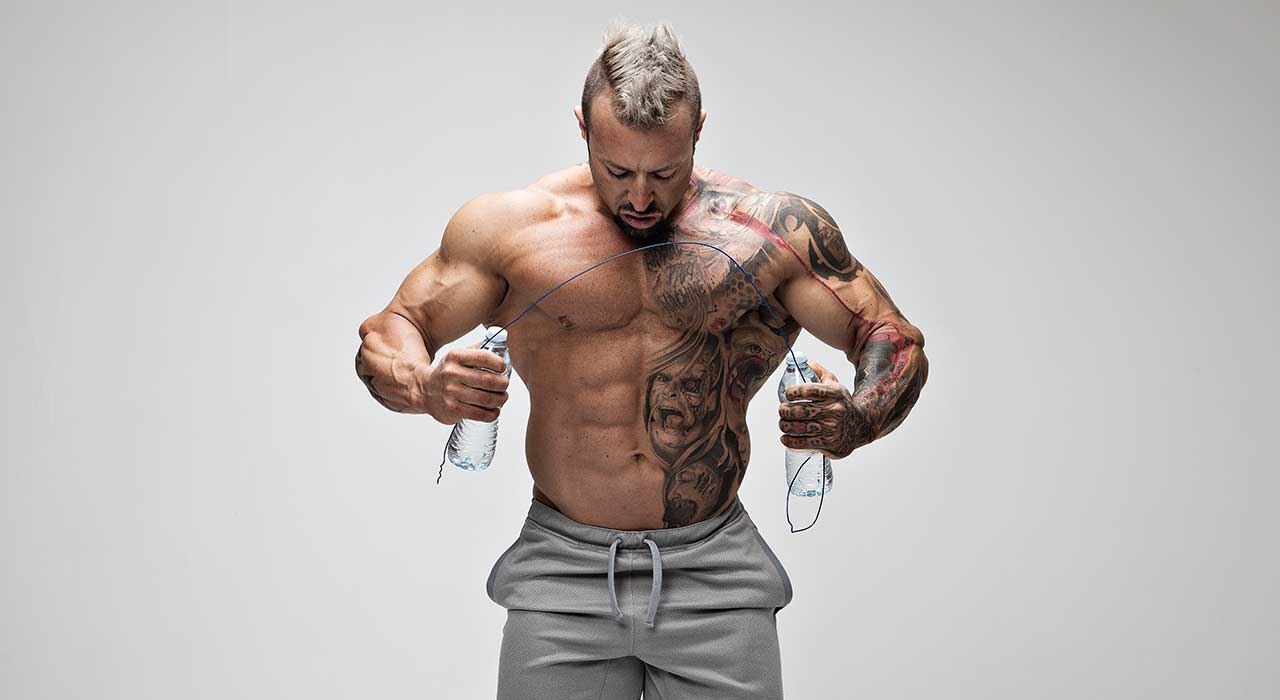When sidelined with an injury Kris Gethin went from muscle building to endurance training. Here’s how he improved his fitness and recovery rate by getting his body ready for one of the toughest races on the planet.
I completely turned my training on its head after a snowboarding wipeout tore my hamstring and pec minor. I’m a very active person, so following the injury I knew I’d have to have some sort of fitness goal I could aim for during rehab, but obviously lifting weights was out of the question.
I also knew I’d be bored if I did just one thing, like cycling or swimming, so I decided to train for a triathlon and went on a zero-protein diet to shed the muscle, which takes up a lot of oxygen.
Below are some of the valuable lessons I learned along the way.
The hard years
While rehabbing, a lot of my training was core stability work, sprints, long-distance runs and hill runs. I quickly noticed an improvement in my running drills so I started wearing weighted vests to make things harder. My thinking was that when it came to do the triathlon I’d find it easier.
When swimming, I’d put a float between my legs so I could use only my upper body, and I started training three hours a day as opposed to the 35-45 minutes I’d usually spend in the weights room as a bodybuilder.
Measured eating
I took away all my first-class proteins like steak, poultry and fish. The only thing I did have were protein powders with some pineapple, berries and Greek yogurt, because I knew they’d really fuel my workouts. My fruits, carbs and fats increased drastically to make sure I had dense calories and hormonal reproduction from the fats so I could stay mentally focused and energized. I was also taking a lot of antioxidants because I was building up a lot of free radical damage. Plus, I drank a lot of coconut water to rehydrate.
Ready, set, go
Eventually it was time to compete, and as soon as the gun went off I focused on slow and controlled breathing to keep my heart rate and adrenaline low. Surprisingly, I was in the top 10 after the swim, and next came the cycling – my strongest of the three events. Within two miles I had the lead and I often wondered if I’d taken a wrong turn because no one caught up to me – until the very end of the run when I was passed by one of the more experienced triathletes. For the following week I experienced DOMS (delayed onset muscle soreness) like I’d never felt before, but I felt happy and content knowing I’d given it my all.
Enjoying the lighter side of life
While training for the triathlon I felt like a teenager again, so much more energized. And now I’m back into bodybuilding, following my rehab, I’m living-proof that even when you’re ‘bulking’, doing high-intensity cardio helps with recovery.
You see, one thing I did learn was that when you watch Tour De France competitors sprinting over the finish line, they suffer a huge lactic acid build-up but then have to hit the mountains the very next day. One of things they do to speed up their recovery is to jump straight on a static bike for 20-25 minutes before drinking a recovery shake. This helps flush out the lactic acid and reduces inflammation.
This is something I’ve applied to my weight training, replacing the stationary bike with high-intensity cardio in the form of a run once a day. Even though I’m currently the heaviest I’ve ever been, I’ve never felt healthier. I don’t get joint ache or shin splints and I’m not out of breath all the time. I train with a lot of intensity, limited rest periods and I’m still able to bang through the workouts much easier now.
Find celebrity interviews, workouts and more in every issue of TRAIN magazine.







